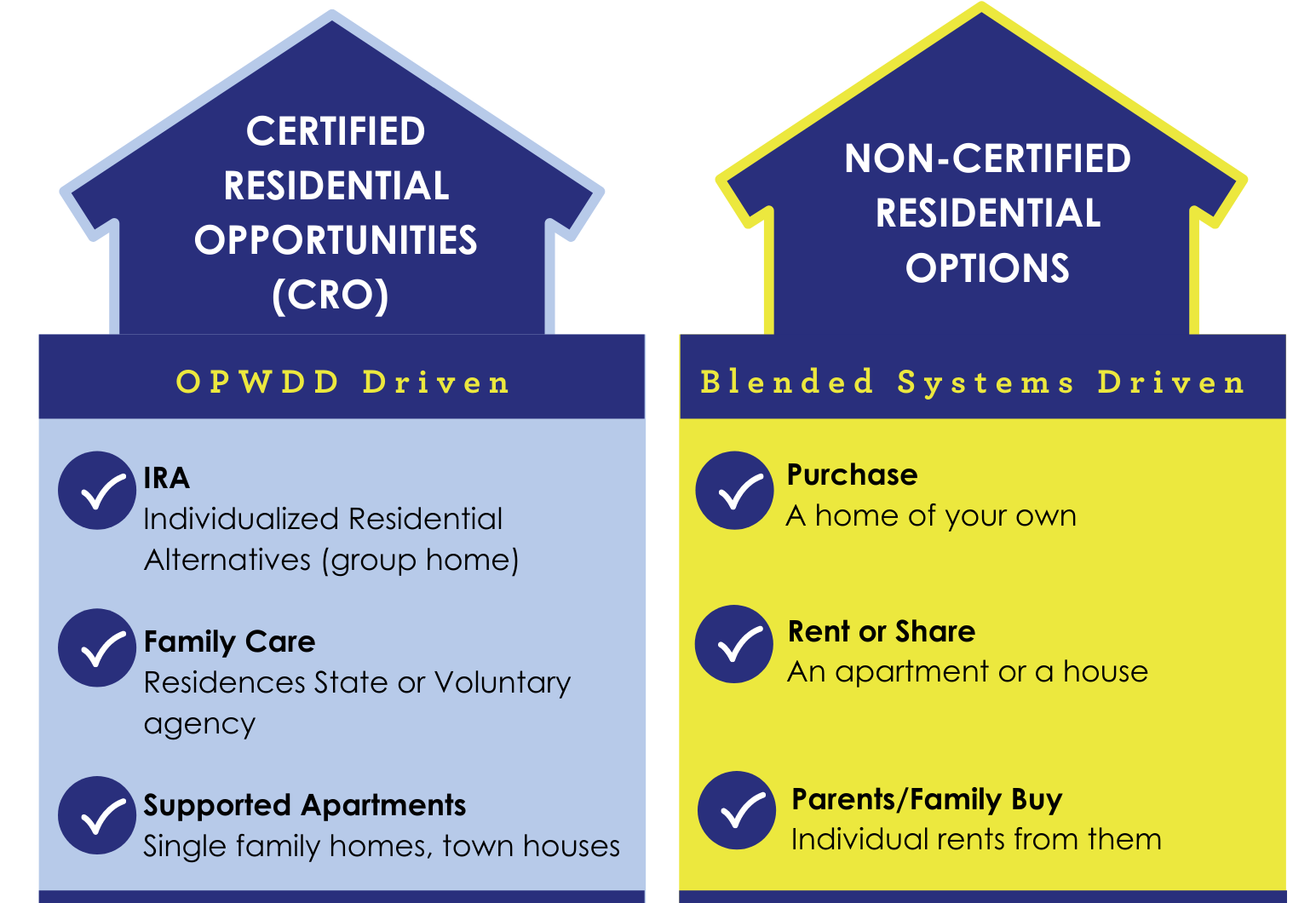Where can I live?
A wide range of residential opportunities are available for adult children with IDD. Many of these children still live at home.
A recent survey of the LIFEPlan MFA Council indicated that a 50/50 split in those interested in a certified residence versus non-certified setting. Many had not yet discussed residential options with their Care Manager and were unclear on the process to access those options.
Amy Claire, Associate Director of Care Management in the Mohawk Valley, suggests families start the discussion with their adult child slowly in a non-stressful way, possibly showing them examples of the available options or introducing them to peers who may have already transitioned to a residential setting.
Michele Lawton, whose son is in a certified residence, encouraged families to start talking about alternative settings with their children early. This is because many options have wait lists or requires financial planning . Addressing residential alternatives is more effective with a person-centered approach. This is especially true for those who self-direct.
Key take-aways
- More resources and learning opportunities would be of great value to LIFEPlan members and their families.
- Process is as much about the emotional journey as it is about the procedure
- Care Managers are a critical part of this major life transition
- An early start to the discussion for long term planning is advised
- Should be detailed in the Life Plan.
This infographic provides a tool for families and self-advocates to explore the range of residential options and the funding/systems that support each of those opportunities.
Residential options can vary from region to region, and the process is typically lengthy. Long term planning is advised and should be detailed in the Life Plan.
For more details, the NYHRC is an excellent resource.
Click the image below to download the full infographic.


